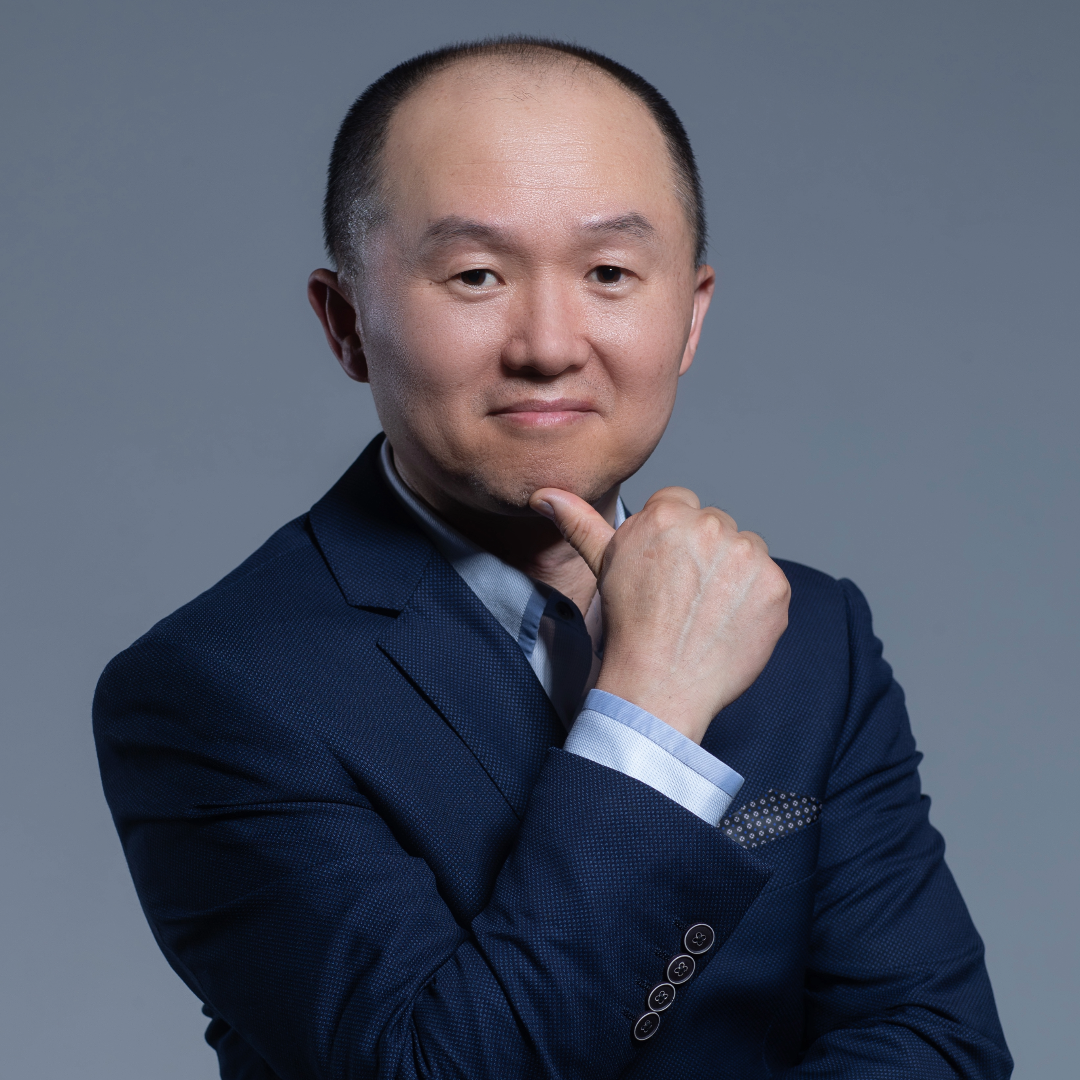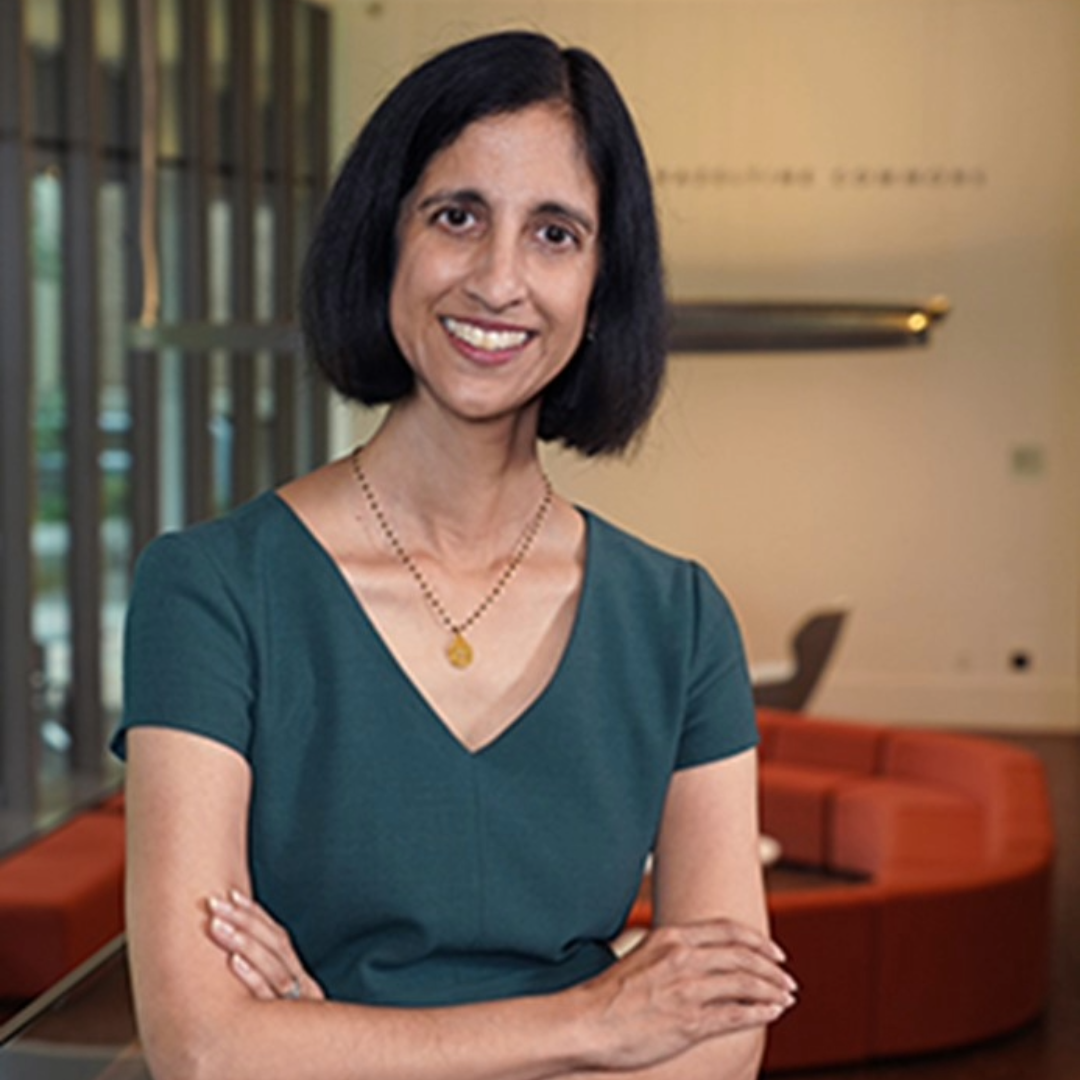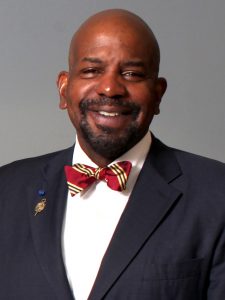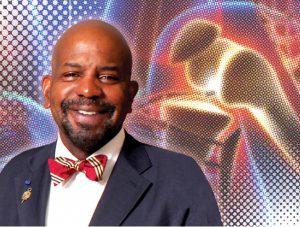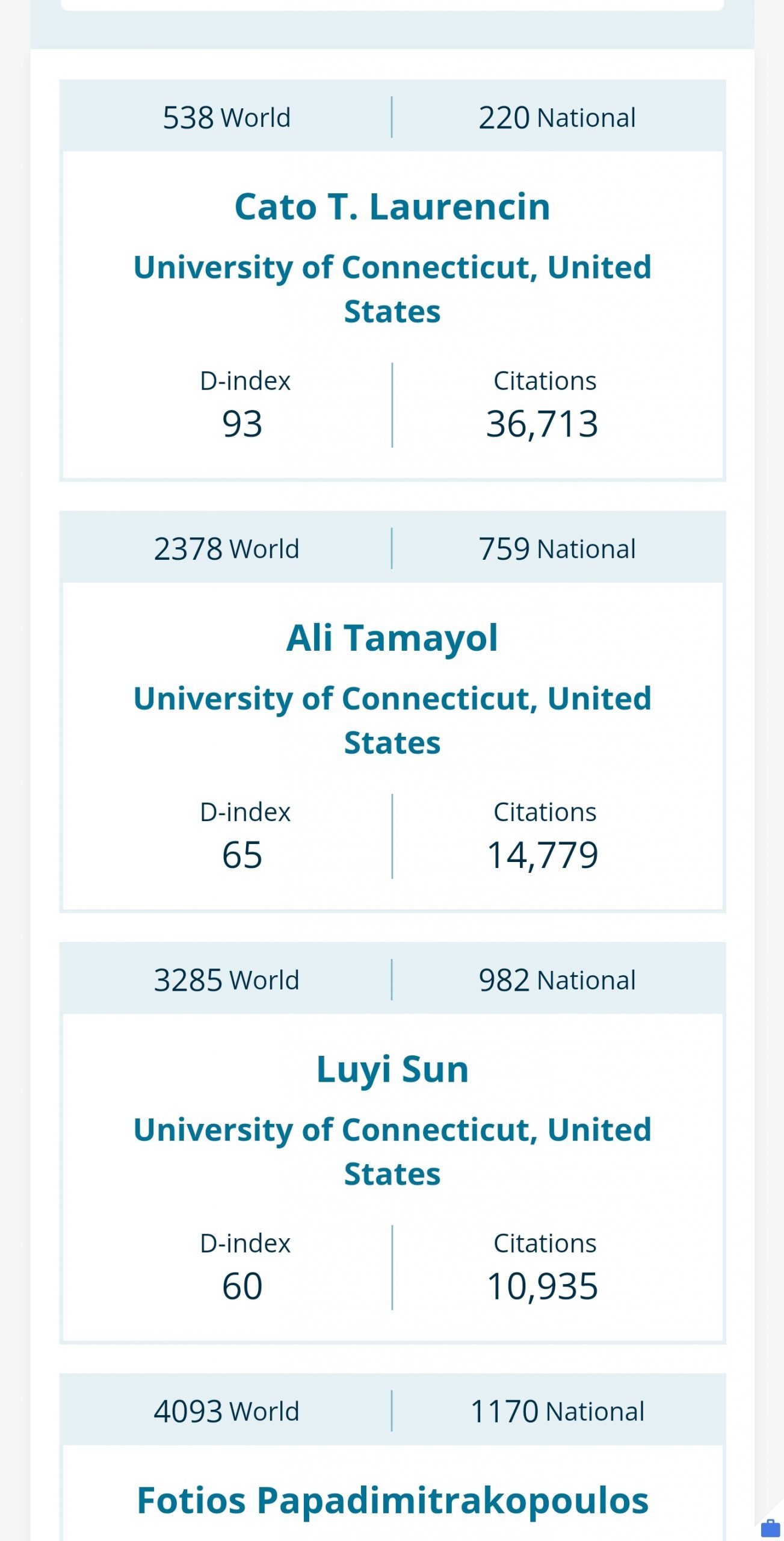The Orthopaedic Research and Education Foundation (OREF) and the UConn Foundation today announced a new partnership to support The Cato T. Laurencin Institute for Regenerative Engineering at the University of Connecticut. Read more.
News
Breakthrough Rotator Cuff Treatment – US Today Article
Breakthrough rotator cuff treatment repairs and protects the shoulder from injury. Read the full article.
Dr. Laurencin applauds three Regenerative Engineering Scientists honored by The Biomedical Engineering Society
In the month of October, three scientists in the field of regenerative engineering will be receiving awards from the Biomedical Engineering Society (BMES). The winners are, Guillermo Ameer, Tejal Desai, and Jian Yang. Each winner will give a lecture at the 2023 BMES Annual Meeting in Seattle.
“I congratulate these three outstanding engineer/scientists who have made extraordinary contributions to Regenerative Engineering. It is wonderful to see their efforts recognized by the Biomedical Engineering Society and the biomedical community in general.,” said Dr. Cato Laurencin, CEO of The Cato T. Laurencin Institute for Regenerative Engineering at UConn, and Founder of the Regenerative Engineering Society.
Dr. Guillermo Ameer is the Director of the Center for Advanced Regenerative Engineering (CARE) at Northwestern University where he is the Daniel Hale Williams professor of Biomedical Engineering and Surgery at Northwestern University. He will be receiving the BMES Athanasiou Medal of Excellence in Translational Bioengineering Award (the Athanasiou Medal). This award recognizes achievements of an individual who has made outstanding contributions to the field of biomedical engineering with particular focus on translation.
Dr. Tejal Desai is the Sorensen Family Dean of Engineering Brown University. She will be receiving the Robert A. Pritzker Distinguished Lecture Award. This is the highest honor of the American Chemical Society. She is an accomplished biomedical engineer and academic leader who co-organized a Regenerative Engineering Society Rockstars Meeting.
Dr. Jian Yang is a Chair Professor in Biomaterials and Regenerative Engineering, and the chair of Biomedical Engineering Program at the Westlake University. He will be receiving the Wallace H. Coulter Award for Healthcare Innovation Award. This award recognizes achievements of an individual who is integrally involved in the development of a biomedical device, diagnostic test/device, or combination device drug/device in industry.
Dr. Cato T. Laurencin to Receive the Kathryn C. Hach Award for Entrepreneurial Success
The American Chemical Society (ACS) has selected University of Connecticut’s Dr. Cato T. Laurencin as the 2024 recipient of its Kathryn C. Hach Award for Entrepreneurial Success.
As the national awardee, Laurencin is recognized for his use of the transforming power of chemistry to improve people’s lives. The hallmark of this contribution is impact: positive impact on people’s lives and positive impact on the economy by creating jobs that produce a significant economic benefit.
Laurencin’s innovations in regenerative engineering and his impact on the fields of biomaterials, nanotechnology, and stem cell science have had an immeasurable impact. As the leading international figure in polymeric biomaterials chemistry and engineering, he has made not only extraordinary scientific contributions, but has contributed through innovation and invention.
In Connecticut, Laurencin was the lead faculty architect for Bioscience Connecticut. Start-up companies he has founded have led to products now on the market. He received the Connecticut Medal of Technology in recognition of his work in the state.
Nationally, Laurencin is a Fellow of the National Academy of Inventors, and the first surgeon elected to all 4 of the U.S. National Academies. He serves on the board of directors of the National Academy of Inventors and on the National Academy of Inventors Selection Committee.
He received the National Medal of Technology and Innovation, America’ highest recognition for technological achievement, from the President of the United States. In service to our nation, he serves as Vice-Chair of the National Medal of Technology and Innovation Nomination and Evaluation Committee, appointed by both the Trump and Biden administrations.
Most recently, he received the Inventor of the Year Award presented to the world’s most outstanding recent inventors from the Intellectual Property Owners Education Foundation (IPOEF). The IPOEF’s board of directors voted unanimously for him, recognizing his impact on biomaterials, nanotechnology, stem cell science, and the field of regenerative engineering.
Professor Cato T. Laurencin Named 2023 Inventor of the Year
The Intellectual Property Owners Education Foundation (IPOEF) awards the prestigious Inventor of the Year award to Dr. Cato T. Laurencin for his groundbreaking innovation in regenerative engineering. Dr. Laurencin’s work has led to clinical systems for bone, cartilage, ligament, and tendon healing and regeneration.
Best Materials Science Scientists
The 1st edition of Research.com ranking of the best scientists in the arena of materials science is based on data consolidated from various data sources, including data sources including OpenAlex and CrossRef. The bibliometric data for estimating the citation-based metrics were gathered on December 6th, 2021.
Position in the ranking is based on a scientist’s D- index (Discipline H- index), which only includes papers and citation values for an examined discipline.
UConn’s Laurencin Elected to National Academy of Medicine Council, Groundbreaking Institute for Regenerative Engineering Launched
Please see the article link here:
https://ctbythenumbers.news/ctnews/uconns-laurencin-elected-to-national-academy-of-medicine-council-groundbreaking-institute-for-regenerative-engineering-launched
1st Truth, Racial Healing, and Transformation Research Day
On May 10 the University of Connecticut hosted the first The Truth, Racial Healing, and Transformation (TRHT) Research Day at its UConn Hartford campus. This research day is a part of a series of events centered around TRHT and is sponsored by UConn’s Office for Diversity and Inclusion.
The Cato T. Laurencin Institute at UConn School of Medicine has many programs and initiatives that revolve around solving health disparities. The institute reports on the scholarly progress of work to understand, address, and eliminate health disparities based on race and ethnicity.
Read the full article here: https://today.uconn.edu/2023/06/uconn-health-faculty-and-students-at-the-inaugural-truth-racial-healing-and-transformation-trht-research-day/
Healing Big Broken Bones With a Small Molecule
UConn Health scientists describe a new method that can promote regrowth of long bones more affordably and with fewer side effects than other techniques
University Professor Dr. Cato T. Laurencin and colleagues at UConn School of Medicine used a slightly different approach to encourage bone growth. They wanted to release a medicine directly where new bone needed to grow, and do it in a short period of time.
Read the full article here: https://today.uconn.edu/2023/05/healing-big-broken-bones-with-a-small-molecule/
Advanced rotator cuff treatment repairs and protects shoulder muscle from reinjury
A new paper in the Proceedings of the National Academy of Sciences (PNAS) is reporting that a graphene/polymer matrix embedded into shoulder muscle can prevent re-tear injuries. The technique uses advanced materials to encourage muscle growth in rotator cuff muscles and address the real problem: muscle degeneration and fat accumulation. Read more by clicking the link below.
Advanced rotator cuff treatment repairs and protects shoulder muscle from reinjury – An article done by Canada Today
